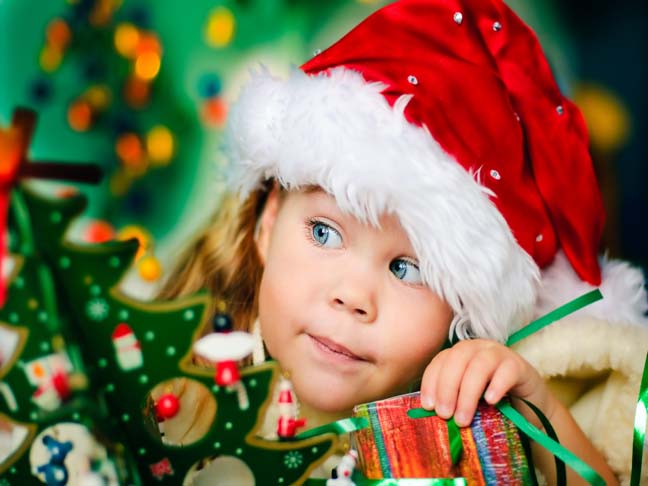Most Canadian cities kick off the season with Santa Claus Parades beginning in November and leading up to the last few days before Christmas. It’s often cold and snowy for these events, but that doesn’t daunt the hearty Canadians who bundle up to enjoy the many outdoor holiday activities.
A Canadian Christmas is always bustling and festive, and the people especially enjoy the light festivals that are common across the country. Niagara Falls hosts a Winter Festival of Lights that’s a spectacular combination of water and holiday color, while Toronto marks the season with their annual Cavalcade of Lights. There are similar celebrations in Ottawa, at the VanDusen Botanical Gardens in Vancouver where the weather is likely to be milder, and in Airdrie – just 22 miles from Calgary. The cobblestone streets and classic buildings in Montreal are dressed traditionally for Christmas with acres of evergreen swags and glistening white lights that play up the European mood of the city. The scene in old Quebec City is storybook-perfect, with the snow-capped 17th century buildings draped in holiday greens and lights as carolers stroll the streets and vendors offer hot ciders and wassail to chilly shoppers.
As various cultures moved to and made Canada their home over several centuries, the traditions they brought with them blended to make the Canadian Christmas both unique and familiar. Canadians have Christmas trees and advent calendars from the German influence, lighted windows that are a traditional Irish custom, enjoy the costumed singers known as mummers that originated in Scotland, and wait for Santa Claus to make his appearance on Christmas Eve bearing gifts for children who have been good all year. It’s a delightful blend of different cultural backgrounds coming together in comfortable and cherished holiday traditions.
The French influence in Quebec places great importance on crèches and nativity scenes in homes, and families attend midnight mass on Christmas Eve and celebrate Christmas day with the “la reveillon” feast of pastries and meat pies. Those Canadians of Scottish and English descent honor their traditions with holiday meals recalling British influences – roast goose and plum puddings, pastries, bread and cheese. The large Canadian population of Inuit and other First Nation people hold their special winter festivals at Christmas. Known as “sinck tuck,” their tradition makes this holiday a time for feasting, exchanging gifts and dancing.
English-speaking Canadians get a visit from Santa on Christmas Eve when he delivers gifts for the children to open in the morning, while French-speaking Canadians give their children gifts on Christmas Eve and Pere Noel visits during the night to leave additional gifts. In some French-Canadian homes the children open presents in their stocking on Christmas Day and wait until New Year’s Day to open larger gifts.
Christmas in Canada is almost always snow-kissed, and families enjoy the holidays with outdoor winter activities including sledding, ice skating, and skiing.
